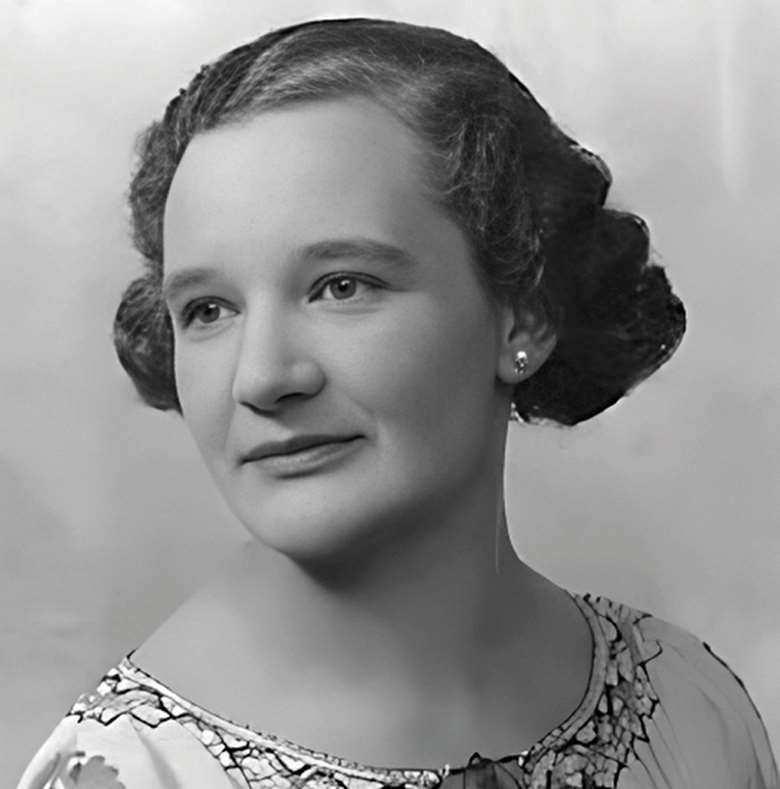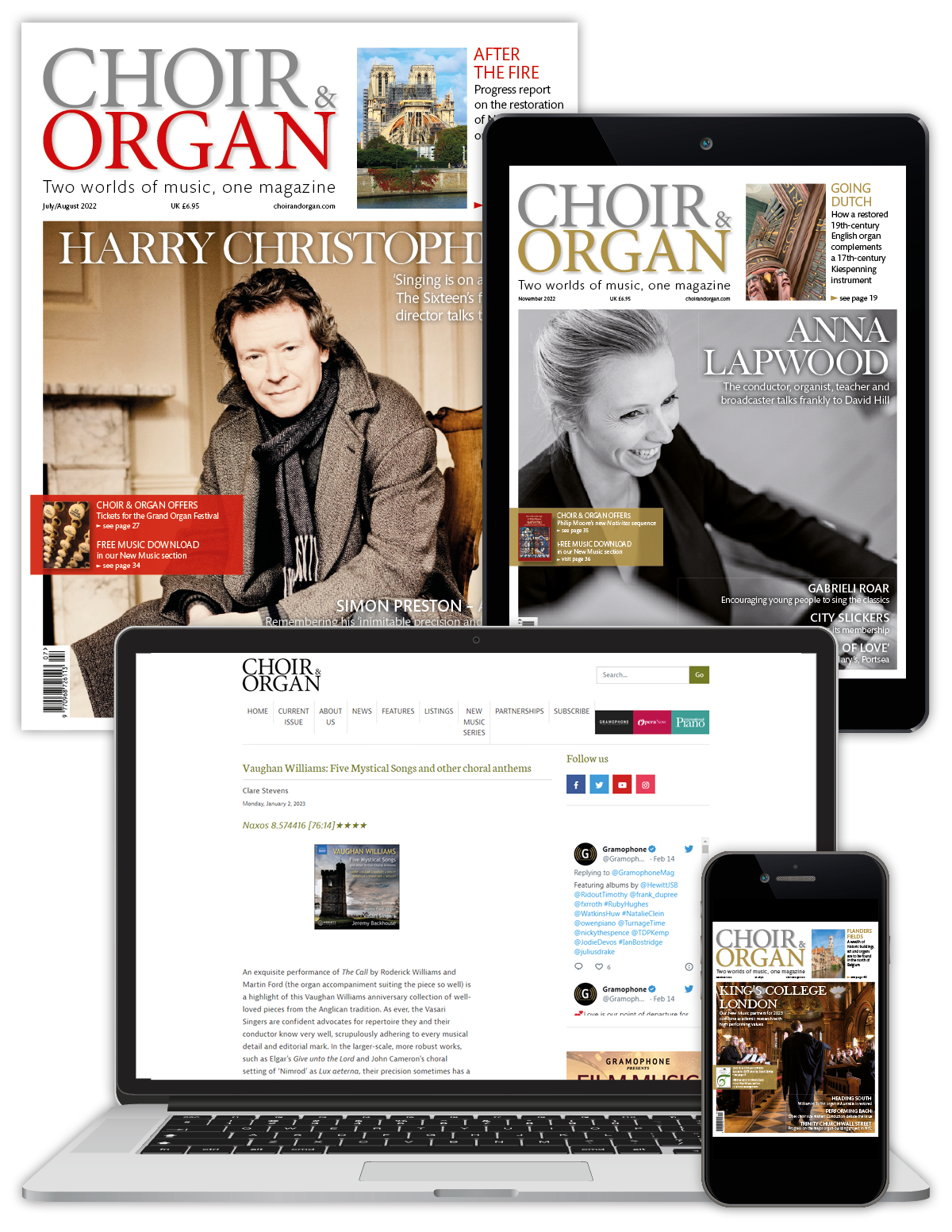Exploring the choral music of Avril Coleridge-Taylor
Leah Broad
Friday, May 10, 2024
A new regular feature from Leah Broad looks into the choral music of underrepresented composers, beginning with the complex political world of Avril Coleridge-Taylor

When Avril Coleridge-Taylor arrived in Johannesburg in 1952, she was overwhelmed by how different from London the city sounded. ‘The busy streets’, she observed, ‘are ever filled with musical sounds,’ from the trilling of canaries to the lilt of accordions accompanying groups of singers sitting outside shops – quite different, she felt, from the ‘raucous voices’ that dominated ‘English cities and towns’. Most of all, though, she was drawn to the choirs that she heard there, where ‘full rich voices rise in glorious harmony, ringing with superb beauty of tone, intense with emotion.’
This visit to South Africa would be a pivotal point for Coleridge-Taylor’s career, and for her attitude towards choral music. Partly, she had moved from England to escape the prejudices against women musicians that she had experienced there. The BBC routinely rejected her for conducting opportunities, and she was used to her gender marking her as extraordinary in musical circles. When she became the first woman to conduct on the bandstand at London’s Hyde Park in 1938, one perplexed reviewer reported that ‘I was astonished to see a woman conducting the orchestra. I couldn’t believe it at first, but a kindly official explained to me that I had passed by on an historic occasion.’
‘I am a British subject, England is my home, and I have a personal interest in the racial problem’
At first, it seemed as though South Africa was far more accepting of the idea of a woman being a musical creator and leader. Within weeks of arriving, she had engagements booked with orchestras across the country, including the high-profile South African Broadcasting Corporation Orchestra, and the municipal orchestras of both Cape Town and Durban. It was the kind of career she had only dreamed of in the UK.
But this idyllic impression of South Africa would not last. The National Party had recently instated its policy of apartheid, and under this system, as a woman of mixed race heritage Coleridge-Taylor was not classified as white. Her father was the mixed race black British composer Samuel Coleridge-Taylor and, while she certainly never lied about her parentage – she gave broadcast lectures on her father and his music – she chose not to be explicit about her race. Accepting how others saw her, she initially passed as white, and took on the work that was offered to her. In 1954, though, her father’s racial identity was discovered, and she found her contracts cancelled and future work opportunities cut off. With no way of securing an income, she wrote to a friend in desperation. ‘I cannot live on air,’ she said, but ‘for the past two weeks I had but £1 to live on for everything. When that went I didn’t know what to do. I went to the bank to explain the position, but they refused to help me. I knew then I must last at least four days without any food.’
Eventually, Coleridge-Taylor was able to make her way back to England, but it was with ‘a terrible, empty loneliness in my heart’ and ‘a feeling of shame over what had happened over the colour question.’ Her relationship to her racial identity was extraordinarily complex. Although her father had adopted a position of Pan-African solidarity, and many of her own early appearances as a musician had been with organisations dedicated to racial uplift in the UK, as a mature musician she seems to have drifted away from using her work to explore her heritage or build connections with other musicians of colour in the UK. She had always seen herself as British first and foremost, and until she went to South Africa that had not been in conflict with her racial identity. Apartheid, however, changed Coleridge-Taylor’s life completely, forcing a profound reevaluation of her priorities and how she understood herself.
Before South Africa, Coleridge-Taylor mostly used choir in works focused on her ideas about Britain and Britishness. In her choral and orchestral work Wyndore (1936), for example, she brings in a wordless chorus to convey the sounds of the Sussex Downs, where she had moved in the 1930s. In her programme note for the piece, she explained that ‘if one stood quite still, listening, one could hear lovely musical sounds,’ and that she built the piece around her transcription of a ‘tune borne on the breeze’. It is a whimsical, tranquil work that evokes a pastoral idyll, in a style influenced by Vaughan Williams.
This would remain an important strand in her choral music all her life – running throughout her entire choral output is a consistent engagement with the British tradition of ‘light music’. Her own musical career had started with singing the sentimental songs that were so popular in Britain in the late 19th and early 20th centuries, and she continuously wrote pieces for both solo and group voices in this style. In the 1940s she set up a choir called the Coleridge-Taylor Singers, and they performed her choral works with titles such as All is Beauty (1945) and Through the Sunny Garden (c 1949); in 1956, after returning from South Africa, she penned In September to a text by the Irish poet Francis Ledwidge, and made choral arrangements of popular songs including Ivor Novello’s We’ll Gather Lilacs.
After South Africa though, Coleridge-Taylor’s engagement with choral music also suggests a turn to a position of Pan-African solidarity closer to that of her father. She began by establishing and conducting a choir for singers of colour, calling it the ‘New World Singers’. In 1956, she arranged a set of spirituals for them to sing for a BBC radio production of the play The Green Pastures, with an all-Black cast. Separately, she also wrote a Ceremonial March for Ghana in 1957 to celebrate Ghanaian Independence, which was performed and broadcast in Ghana, and for which she received a letter of appreciation from the Ghanaian president, Kwame Nkrumah.
It’s perhaps unsurprising that Coleridge-Taylor should turn to choral music specifically at this point in her life – apart from the fact that she had been particularly struck by the Black choirs she heard in South Africa, choral music had been a foundation of her childhood and was closely associated with her father and his work. Avril had grown up with his choral epic The Song of Hiawatha (1898-1900), which had been quickly adopted by Pan-African groups in both the US and the UK. As a budding singer, she often sang the part of Minnehaha – including, when she was just 17, a particularly memorable performance opposite the world-famous tenor Roland Hayes, in his first Plymouth appearance.
With Coleridge-Taylor, nothing is ever simple. Publicly, she rarely admitted that she had experienced any prejudice at all in South Africa, just as she maintained that she had never been subject to any gender discrimination in the UK. In her private writing, though, she continued to try to work through her thoughts about South Africa and apartheid, as well as racial prejudice in Britain. As she put it, ‘I am a British subject, England is my home, and I have a personal interest in the racial problem’. Coleridge-Taylor’s choral writing formed part of her expression of the different aspects of her identity, giving us a sonic portrait of a mixed race British woman trying to navigate the contradictions of her politically fraught world.
Leah Broad is an award-winning writer, and the author of Quartet: How Four Women Challenged the Musical World
All Avril Coleridge-Taylor’s copyright material appears courtesy of her estate
This article originally appeared in the Summer 2024 issue of Choir & Organ. Never miss an issue – subscribe today






